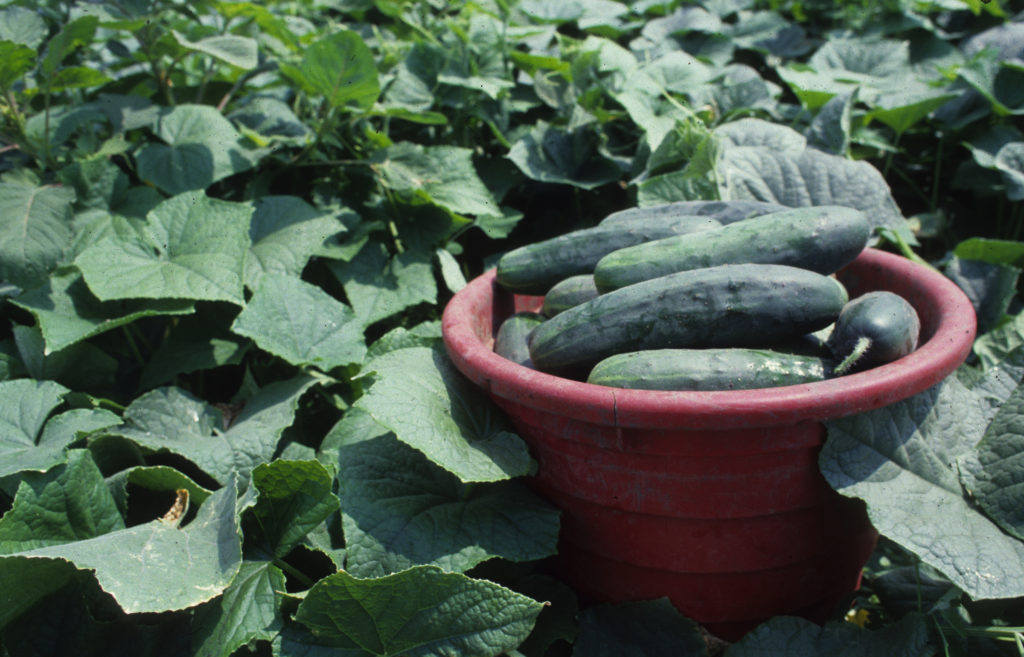Basics for Growing Cucumbers
go.ncsu.edu/readext?686331
en Español / em Português
El inglés es el idioma de control de esta página. En la medida en que haya algún conflicto entre la traducción al inglés y la traducción, el inglés prevalece.
Al hacer clic en el enlace de traducción se activa un servicio de traducción gratuito para convertir la página al español. Al igual que con cualquier traducción por Internet, la conversión no es sensible al contexto y puede que no traduzca el texto en su significado original. NC State Extension no garantiza la exactitud del texto traducido. Por favor, tenga en cuenta que algunas aplicaciones y/o servicios pueden no funcionar como se espera cuando se traducen.
Português
Inglês é o idioma de controle desta página. Na medida que haja algum conflito entre o texto original em Inglês e a tradução, o Inglês prevalece.
Ao clicar no link de tradução, um serviço gratuito de tradução será ativado para converter a página para o Português. Como em qualquer tradução pela internet, a conversão não é sensivel ao contexto e pode não ocorrer a tradução para o significado orginal. O serviço de Extensão da Carolina do Norte (NC State Extension) não garante a exatidão do texto traduzido. Por favor, observe que algumas funções ou serviços podem não funcionar como esperado após a tradução.
English
English is the controlling language of this page. To the extent there is any conflict between the English text and the translation, English controls.
Clicking on the translation link activates a free translation service to convert the page to Spanish. As with any Internet translation, the conversion is not context-sensitive and may not translate the text to its original meaning. NC State Extension does not guarantee the accuracy of the translated text. Please note that some applications and/or services may not function as expected when translated.
Collapse ▲Have you heard the saying “Cool as a cucumber”? Well, there is some truth to that saying. The inner temperature of a cucumber can be up to 20° cooler than the outside air due to its water content.
Cucumbers are vegetables that are members of the plant family Cucurbitaceae, which also includes squashes and melons. Cucumber plants grow in two forms: vine or bush. Vines grow along the ground or up a trellis. Bush cucumbers grow on a compact plant.
Full sun and well-drained, loamy soil are preferred for growing cucumbers. They
are very sensitive to cold and will not germinate until the soil temperatures reach at least 60°. Seedlings should be planted 12” apart and thinned to 1.5’ apart once reaching 4” tall. If space is limited, use a trellis for vining varieties. Trellising will also give you a higher yield and improved fruit quality.
Cucumbers have two basic types—those that are eaten fresh (known as the slicing variety) and those grown for pickling. Cucumbers come in many shapes and sizes depending on the variety. Generally, smaller cucumbers contain fewer and smaller seeds. Popular varieties are Ashley, Cherokee 7, Gemini, Palomar, Poinsett, and Straight 8. In warm summer soil, cucumbers can grow and ripen in 6 weeks.
Cucumbers are best eaten raw and added to cold salads, sandwiches, wraps, dressings, spreads, or dips. They can also be served with hummus, salsa, or low-fat dressing for a dip. Cucumber has an anti-inflammatory effect and slices placed over your eyes can help reduce puffiness, hydrate the skin, and refresh them!





